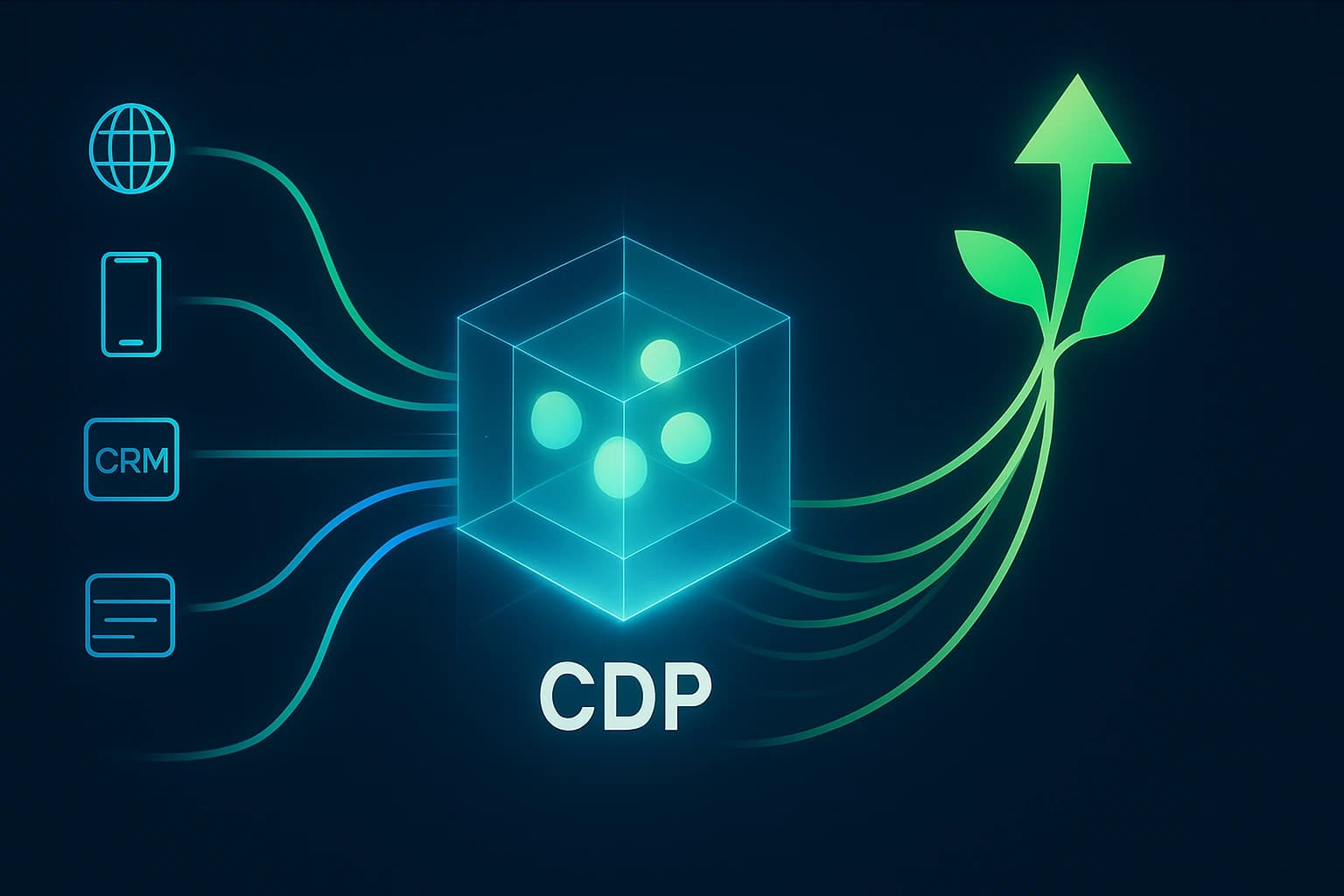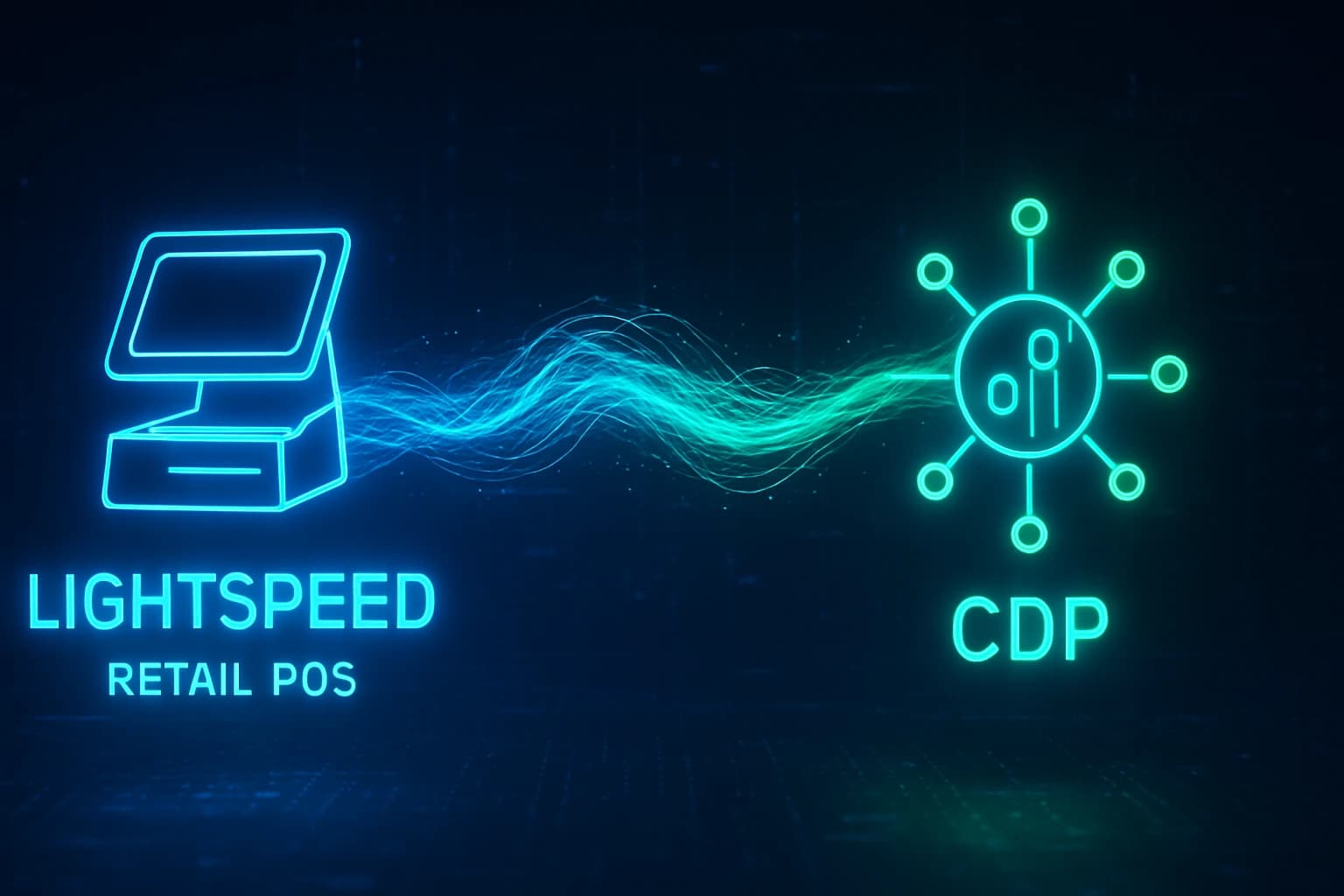If you’re a B2C company or even in the B2B space, and are looking to take your business to the next level, consider using a customer data platform (CDP).
It is a sophisticated piece of software that helps you collect, manage, and utilize customer related data to improve your marketing and sales efforts.
By deploying it, you can clean your data, integrate all of it into a central repository in the format you require, and get a 360 degree profile of every customer in order to target them more effectively, thus boosting your profits.
The Benefits of Using A Customer Data Platform for Business Growth
It is a software-as-a-Service solution (SaaS) that helps companies better understand and engage customers. When used effectively, it can help companies increase revenue, improve customer experience, and reduce operational costs.
It can also help you grow your business by providing a wealth of actionable insights.
Here are some of the benefits of using a CDP for your business:
1. Quick and accurate data collection
When you use it, you can quickly and easily collect data from customers. With 3rd party cookies being phased out, it can be used to store 1st party and zero-party cookie data.
In many cases, customers are already giving you this information through online forms, surveys, and feedback.
What’s more, with a CDP, you can easily track data such as: purchases, return visits, revenue generated from online advertising, and competitor research.
2. Strategic data analytics
With this, you can conduct sophisticated and insightful data analytics.
For example, you can use machine learning to understand how customers interact with your product or service (such as their most common ways of searching for products).
3. Effective messaging
Another benefit of using a CDP is targeted and personalized communication. For example, you can use data to understand when your customers are most likely to churn and generate targeted emails that help you retain them.
You can also build products and services based on your customers’ preferences. This can help you increase sales.
4. Save time and boost efficiency
It can help save time and boost efficiency for your business. For example, you can automate many of the tasks that a data analyst would normally do manually.
This can help you save time and be more efficient. It can also help reduce errors and inefficiencies in your company.
—---------------------
Are you ready for your business transformation with Customer Information Management?
—---------------------------
Why You Should Use A CDP
You can organize and manage your prospects and customers efficiently with a CDP. Instead of relying on spreadsheets and hand-drawn maps, this SaaS is easy to use and helps drive business growth.
Every customer leaves behind information while interacting with a brand. When they interact with companies using other online and offline channels like websites, e-commerce platforms, and in-store interactions, their footprints can be tracked.
Here’s some of the data that a customer data platform (CDP) uses:
Transactional data: Includes information such as items purchased, number of abandoned carts, returned products
Customer attributes: Includes name, gender, contact information
Customer service info: Includes customer communications, live chat, number of interactions, and so on
Here’s how to determine why your business needs a CDP:
- Are your business goals in place?
- Do you want to meet these goals with technology such as data analytics?
- Does your data sit in silos?
- Is your data accessible to a majority in your organization? If not, can you make it accessible?
A CDP makes it easy to build customer personas, segment your customers based on traits such as interests or purchase behavior, and even tailor your marketing messages.
It can help you reduce customer acquisition costs by facilitating the process of finding, qualifying, and engaging with customers.
Companies using a CDP can learn what’s working and what’s not with customers, making it easier to identify pain points and address them quickly. This helps companies retain customers and build loyalty, which in turns boosts revenue.
With this, companies can better measure their marketing campaigns and ensure they are getting the most value for their marketing investment.
For example, a real estate development company might know that one of its most successful marketing tactics is social media advertising, but it may not be able to quantify how much money it’s saving versus how much it’s spending on social media.
It would allow the company to better analyze the data and find out how much return it is getting for its marketing investment.
When companies use it, they can better identify and target new customers, making it easier to bring in new leads and improve the success of their marketing campaigns.
Different Types of Customer Data Platforms
CDPs have evolved over the years. Today, we are in the second iteration of CDPs where vendors offer either a complete, all-in-one platform or a task-specific one. There are a number of different types of customer data platforms.
Businesses need to do due diligence on why they require it, and based on the result, can decide to choose any one.
– Retail analytics: This platform helps retailers track customer behavior and insights such as purchase history, browsing habits, and brand affinity.
– Marketing automation: This module helps marketers to automate the process of marketing campaigns, including email marketing, social media marketing, and search engine optimization. It can be a layer added on top of retail analytics module.
– Customer service: This platform helps customer service reps to handle customer queries and support issues more effectively.
What is Required
There are three minimum requirements:
Select the right data:- You need data as a starting off point. This can include basic contact information (such as name, company name, email address, and phone number) as well as more complex data (such as interests, purchase behavior, demographics, preferences, etc.).
It’s important to gather all this data from your customers, prospects, and business partners. The more data you have, the better your customer data platform will be.
Map the data:- Once you have the data, you need to map it to a common format. This is where the really cool part of a CDP comes in.
You can add, remove, and reorder fields to create a perfect view of your data in the platform. The platform also makes it easy to filter your data, so you can quickly find what you’re looking for.
Get going:- Once you have your data mapped, you’re ready. A set of tools can help you get your CDP up and running quickly.
Some of these include a customer relationship management (CRM) software. This allows you to use the data from your CRM to power your CDP.
The Different Types of CDP Vendors
We’ve already told you of the many kinds of CDPs that exist in the market today. Obviously, there are different types of CDP vendors, too.
- All-in-one platforms: These platforms offer a complete solution, including data mapping, data analysis, and campaign automation.
- Task-specific platforms: These platforms focus on a specific task, such as customer service or marketing automation.
- Separate platforms: These platforms offer separate modules, such as data mapping, data analysis, and campaign automation.
Here’s a tip: Today though, a CDP vendor is not only an entity that merely sells a CDP but also one that works with the outside company to hand-hold it during the time it takes to integrate the platform with other MarTech.
Express Analytics is one such vendor. We provide help not only with the integration of our own CDP Oyster, but if your business has purchased it, yet is faltering during its implementation, we are there to help you too, as a third-party vendor.
What is a good ROI for a CDP?
One must understand that the CDP itself cannot be directly linked to Returns on Investment (ROI) since the software works in the background, fueling marketing and advertising campaigns.
The way to calculate ROI while a business is using a CDP can be quite complex. But, yes, a company should be able to eventually understand whether it is worth it to invest in it.
Right now, there’s no standard industry approach to calculate its ROI. But this article in toolbox.com talks at length on the many ways a business can calculate it.
—------------------------------
Are you ready for your business transformation with Customer Information Management?
—----------------------------------
Why Choose Express Analytics’ CDP Oyster?
Oyster is a flexible CDP with a highly efficient yet simple architecture. Oyster can be the complete package, or can be integrated by specific module; the choice is yours.
It is a development-progressive data management platform with all the necessary components in a place. But at its center is your customer.
The AI-infused customer data platform has automation capabilities that make your day-to-day marketing tasks perform better.
Oyster is extremely simple to launch, integrate and upgrade. Oyster is not just a standalone platform; it goes beyond just merely integrating various sources of data, providing actionable intelligence, obtained from various data points that can be integrated into all your business cells.
Here are some of the steps how it works:
Its AI-driven algorithm auto-checks incoming data quality
On this incoming data, the identity resolution algorithm is deployed to identify customers
On an ongoing basis the addresses, emails, phone numbers, and other aspects of a customer profile are updated
Oyster’s recommendation engine provides suggestions to your marketing team at every step of the way
Oyster’s ML analytics /algorithms have evolved over time and have a very high level of accuracy. We assure you of a strike rate of over 90 percent.


